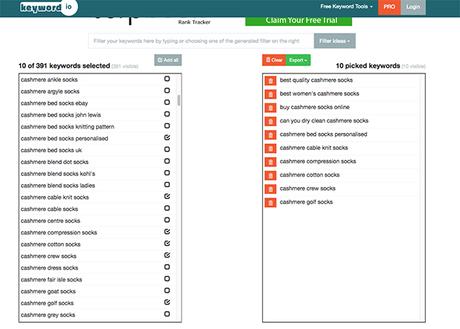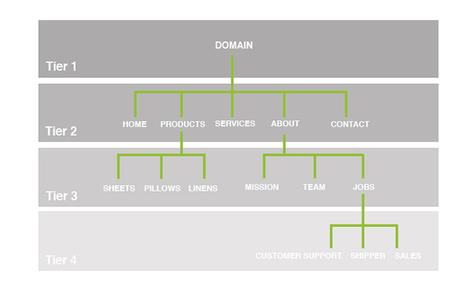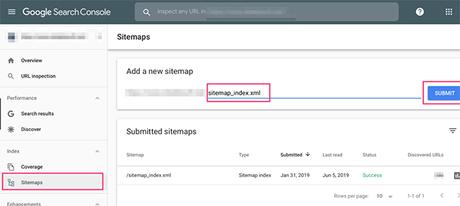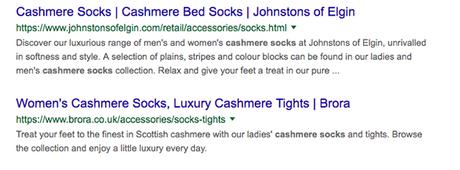Once your store has been designed the way you want it and you've uploaded all your products, it's time to think about how you'll drive traffic to your site. One of the best (longterm) ways to do that is through SEO.
Shopify SEO is an ongoing process whereby you make your website "ready" for Google. It's all about setting up your website so that Google not only knows what's on each page but think it's the best.
That way, when people search for "Organic make up buy online", your store shows up first instead of your competitors.
But the issue with SEO is that when you initially start reading about it, it all seems really confusing. There are so many things you need to consider and implement that it can all become overwhelming.
So we've put together this post that outlines the 7 crucial SEO steps you need to take in order to propel your Shopify store to success.
Once you've nailed down these techniques, you can start working on some more advanced SEO strategies for your Shopify store.
Let's go.
Shopify keyword research
To put it simply, keyword research is the concept where you find out what keywords you want to rank for and what competition already exists.
One good thing about e-commerce is the keywords you'd like to target are largely predefined. Meaning, if you sell cashmere sock, it's likely you'd want to rank for this key phrase when someone searches for it.
Back in the day, when SEO was a new concept, in order to rank on page one, you'd "stuff" your page with as many instances of the keyword as possible onto a page and you'd perform well.
But now, as more and more web pages are created every single day and Google cracks down on trying to give its users the best search results when they enter a term, you need to think carefully about your keywords.
Nowadays, keyword stuffing comes across as spammy and is a bad practice in the eyes of Google. Instead, you want to assign a single keyword to each page on your website and naturally place them on your website, wherever seems natural.
In order to do the keyword research, you could use a tool like Ahrefs, SEMrush or, if you don't have the budget for any of the paid tools, you can simply just use a free keyword tool like keyword.io.

Using this tool, you're able to enter your main seed keyword and it populates a range of other long-tail keywords you can use to ensure you have a wide range of keywords to rank for.
Suppose you only sold cashmere socks on your store, you don't want every page to rank for "cashmere socks" as Google won't know which page is most important. Instead, you could create content around cashmere and rank for terms like "can you dry clean cashmere socks".
A site structure for your Shopify store
One part of effective Shopify SEO is to make sure your site structure is neat and tidy. Imagine for a second, someone goes into your room to find something. If your room is tidy you can direct them:
Open the wardrobe>> The second draw from the bottom >> towards the back >> there are the socks.
But if your room is a mess, then trying to help someone find your socks is difficult. And it works exactly the same for your Shopify store, if someone lands on your homepage, they should be able to get to your individual product pages within a maximum of three clicks.
Meaning: Homepage >> Category page >> Product page.
Any more clicks and you not only ruin the user experience for potential shoppers but you stop Google accurately knowing how to navigate through your site properly.

Source: https://www.searchenginejournal.com/seo-guide-to-ecommerce/162353/#close
Submit your Shopify sitemap
You should have access to Google Search Console, which is Google's free tool that can help you better understand how your Shopify store is positioned within search engines.
A sitemap is basically a map of your website that shows your chosen architecture. It tells Google which of your pages are most important and how Google should actually move through your store.
To submit your sitemap go to google search console

On the left-hand side, you should see a link for "sitemap". Click that and enter the URL at the end. The good thing about Shopify is you have an auto-generated sitemap created for you so you don't need to use any third-party tools to create one.

On-page SEO
Your on-page SEO is everything that happens on the page in order to tell Google what your Shopify page is and its purpose on your site. You can edit your title, meta descriptions in order to indicate to both users and Google what type of content is featured on each page.
Meta descriptions used to be more important in terms of rankings, but Google has since said they have less effect on your position. However, with that said, users use meta descriptions to decide which link to click on when they search for any term.
You'll notice that both the title and meta description include the keyword "cashmere socks" and the user will take this information to inform them as to which link will be most beneficial to click on.
Each page should have a unique page title and meta description so as to avoid duplicate content.
Shopify image and video optimization
Google's crawlers go through your site and read all the text to better understand the content on each page.
But what about your images and videos? Although image recognition is a thing, Google relies on your 'alt-tags' to work out what the image or video is. What's more, when visually impaired users land on your site, the alt-tags can be read by any text-voice software.
Some tips for your alt-tags to make the most out of them:
- Make sure you use proper descriptions. It's okay to use your keywords, but don't stuff them. Make sure to accurately describe what the image is. For example, don't use "image.fjgfgdhs fdsjkfhjksda". Neither Google nor a user would have any idea of what this image is. Likewise, don't do this: "Cashmere socks wool, cashmere, best socks cashmere". This is keyword stuffing. Instead, go for something like this "blue large cashmere socks".
- Even if some of your images look the same, find a way to have a unique alt-tag for each image on your site.
When you're ready to add alt-text to your images, click:
- Products
- Click the product name you want to edit
- Hover over the image and click "alt"
- Add alt text if you haven't already
- Edit alt text if you have some poorly written alt text
- When you're happy, click done.
Final thoughts
Now you've got the basics of SEO, you should start seeing your organic traffic increase. As with anything, remember SEO is an ongoing practice you need to be on top of. Make sure you're consistently updating or creating new content to show Google that your site is continually kept up to date. Also, keep a lookout for potential backlink opportunities to improve your overall domain ranking.
You're now ready to start looking at some more advanced SEO tips for your Shopify store. These, naturally, are a bit more of a learning curve than what we've covered in this article, so look out for part 2, coming soon.

